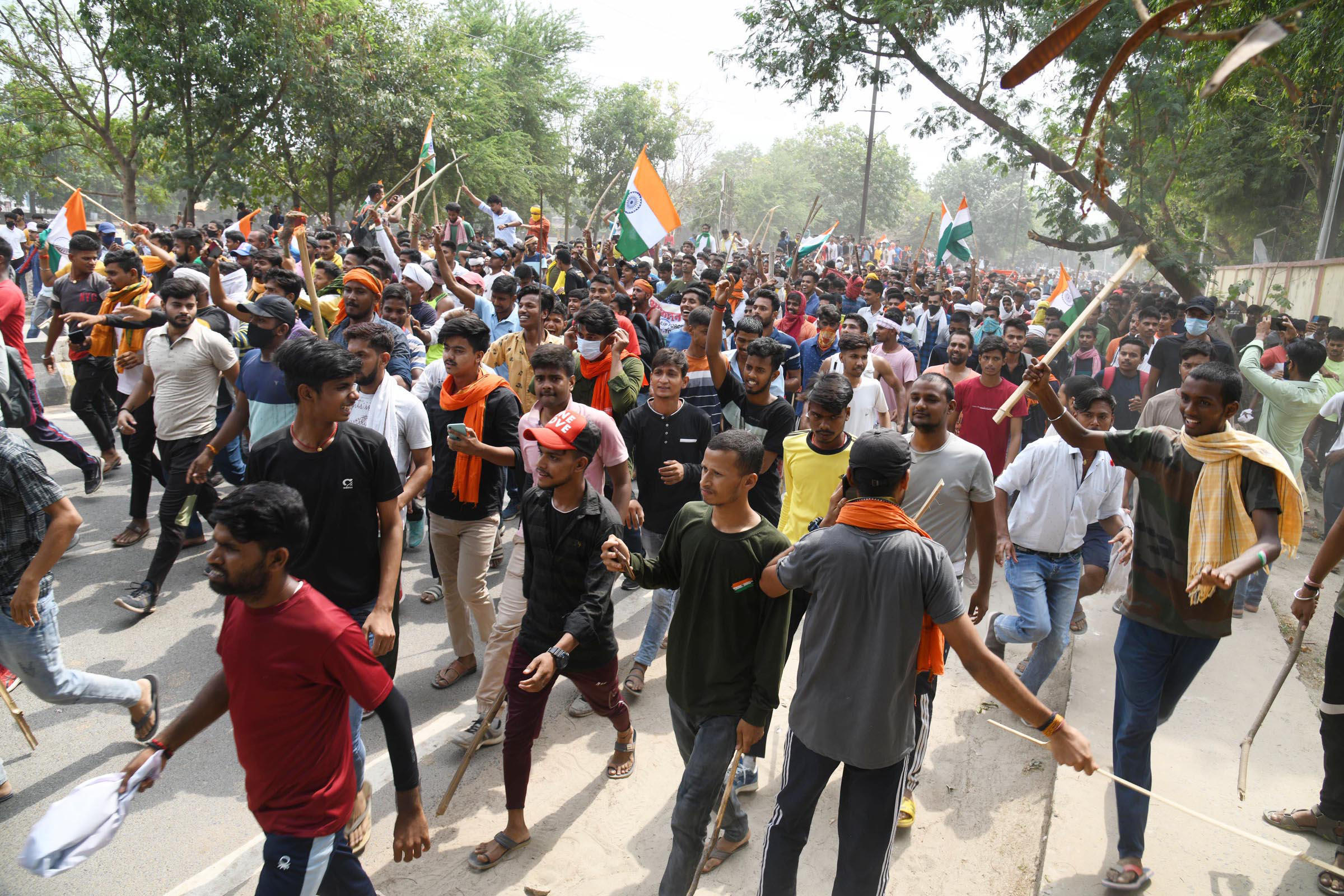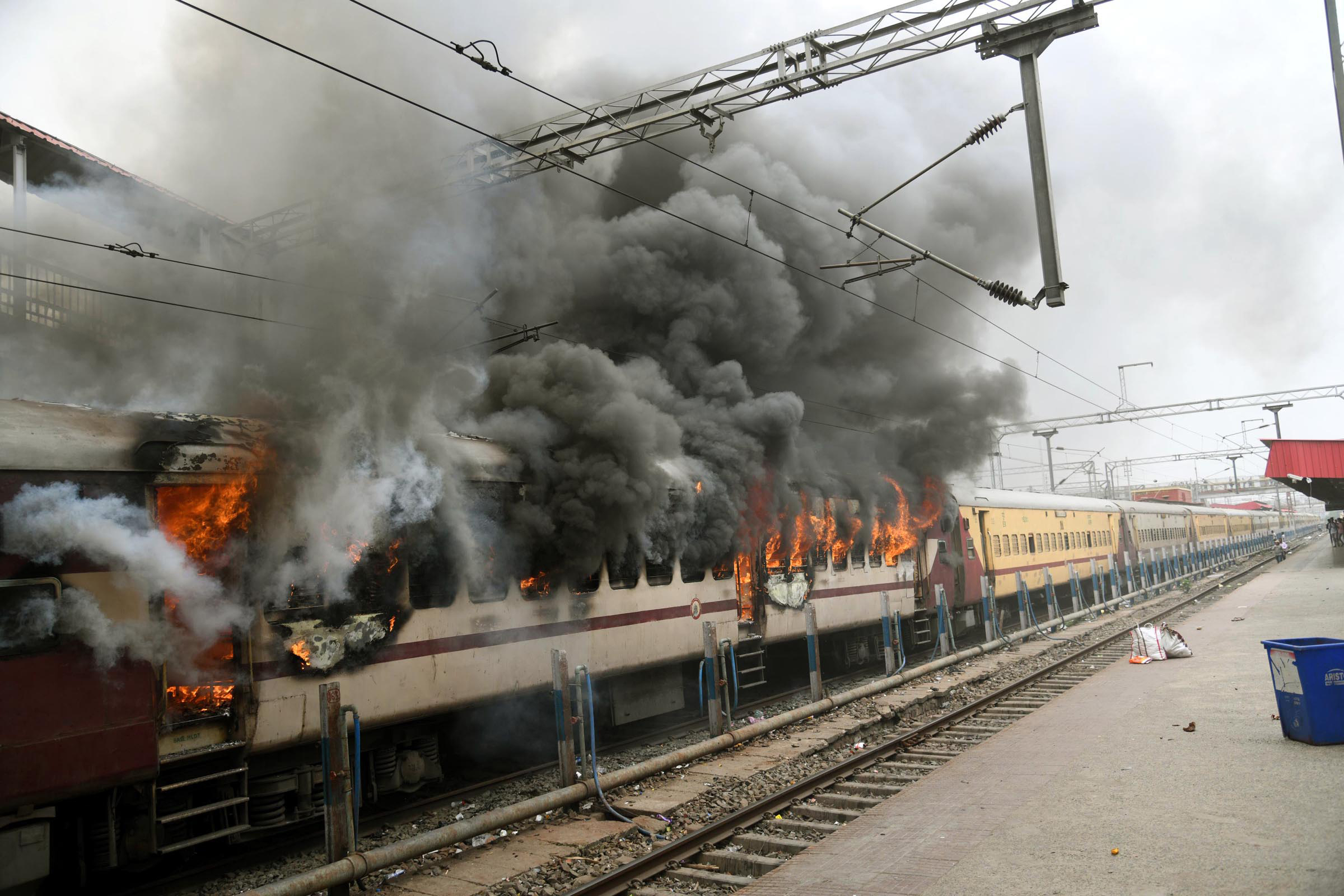
In the face of a short-term tenure, Agniveers may fall short of the commitment that the armed forces expect. However, the pride of donning a uniform could surpass all the negatives of the scheme.
By announcing a half-baked scheme of recruitment in the armed forces, the Government has dangled a carrot. And that too, one which is raw rather than ripe.
Sugar-coating it with a fancy name, the Narendra Modi led government recently launched the Agnipath scheme, christening its beneficiaries as Agni-veers.
Announced mid-June, the scheme is aimed at recruiting half a lakh soldiers across services every year.
A plus point of the scheme is its gender neutrality wherein both men and women in the age group of 17.5 to 21 years will be recruited. A beginning will be made in the Navy.
The recruitment will however be time bound: a mere four years. However, there is a provision to retain 25 percent for a period of 15 years after the completion of their four year “engagement” to quote the official document.
The remunerative package will kickstart at Rs 30,000 per month and the exit package will be a little less than Rs 12 lakh: a one-time payment.
The catch, however, is that 50 percent of this amount would accrue from the earnings of the Agniveers. This is thanks to the compulsory deposit provision wherein 30 percent of the monthly salary would be put in a corpus and an equal amount matched by the Government as contribution.
Add to this the fact that the scheme does not weave in a pension benefit.
It is difficult to say how the Government zeroed in on the Agnipath and Agniveer nomenclature.
Chances are that it was inspired by well-known poet Harivansh Rai Bachchan who wrote a verse about taking a vow to carry on, irrespective of the daunting path. Literally meaning the path of fire, the name is perhaps ominous.
Aimed at igniting a spark, little did the Government know that the scheme would be its test by fire.
No sooner was the scheme announced, there were protests followed by large scale violence.
Trains in Bihar were set on fire; buses attacked; violence in several states including Punjab, Telangana, Jharkhand and Uttar Pradesh; arson and stone pelting in eastern parts; and vandalism of public property. The Police fired tear gas shells and arrested hundreds of protestors in many parts of the country.
Opposition parties jumped in lending support to the protestors, some going as far as demanding a roll-back of the controversial scheme.
Having tasted blood, the Opposition is flexing a muscle based on the calculation that when the farmers’ agitation became too hot to handle the Government relented, so why not push it to the brink this time around too?
The logic is not entirely misplaced because the Government is clearly on a backfoot. Yet, it cracked the whip when it stated that potential recruits would have to take a pledge that they were not part of the protests before they could be inducted.
The jury is also out on whether those protesting were potential recruits. If reports are anything to go by they are either political workers trying to ignite the fire or students fomenting trouble.
Either ways, the Government can ill afford a volatile situation because the BJP is in the eye of a storm for igniting passions.

People, in the past, took to the streets be it on the issue of the Citizens Amendment Bill, the farmers agitation, the hijab controversy, the Prophet row or the Agnipath scheme. This substantiates that violence is perhaps the new normal under the BJP regime.
The narrative: With the BJP in the saddle, the country will always be on fire. Its goons will never let Peace prevail.
This perception is something the BJP can ill-afford. Under fire for its politics of bulldozers and razing houses to the ground, the BJP can well do without yet another taint particularly when it had designed a scheme as a positive.
With the scene getting murkier by the minute, the Government did attempt a damage control. It announced several concessions: a one-time waiver of raising the upper age limit from 21 to 23 years for this year’s recruitment cycle; 10 percent reservations for Agniveers’ in various Central government jobs after completion of the four-year service tenure; state governments and Union ministries promising to absorb 75 percent soldiers released after four years among others.
Whether these assurances will be backed by action, only Time will tell. Given its track record of hollow promises, there is a trust deficit between the people and Government.
In this context, people are quick to point out the ruling Party’s poll promises remained mere promises be it the “achche din” or good days; creating two crore jobs a year; doubling farmer’s incomes; bringing back black money stashed abroad or depositing Rs 15 lakh in the bank account of every citizen.
It is against this backdrop that the assurances being touted in the Agnipath scheme are being viewed with suspicion. Instead they are being construed as a clever ploy to diffuse a volatile situation.
The scheme is also flawed because it kind of short-changes the recruits by showing them the door after four years.
At 23, they would be at a loose end, having invested their productive years in a set-up which is like a tenancy but one that comes without a respectable and long lease.
So the key question: what will they do after four years?.
As things have panned out, the government’s post-protest sops or assurances have failed to cut ice. Or the pipe dream that after four years they would be skilled enough to be employed in the private or public sector undertakings. With unemployment levels at an all-time high, the possibility seems remote.
The recruitment scheme has put the BJP in a Catch 22 situation.
On the one hand, the current dispensation is being damned for handing out a half-baked scheme; on the other it is being charged with actually hoodwinking the electorate into believing that jobs are being provided by flagging a scheme which is a stop-gap arrangement to stem the no-jobs criticism of the Modi government.
The fear that this stop gap arrangement will add to resentment among the youth is not entirely baseless.
The contention that this may lead to “militarisation” of society could be far-fetched but frustration among the youth could lead to serious consequences particularly with India’s immediate neighbours ever keen to fish in troubled waters.
Even if that were not to be, recent statements by Union Ministers and Party’s top brass have stirred up a hornet’s nest.
If one of them said that post service, Agniveers could be hired as security guards, a Union Minister has said that they could be employed as “drivers, electricians, barbers and washermen”.
Taken as an insult to injury, both the Party and the Government drew flak. They went into a huddle, issued a clarification but the damage had been done.
If Jairam Ramesh of the Congress asked whether this is what the BJP meant when it launched the Main Bhi Chowkidaar campaign before the 2019 general polls, some recall Union Minister Amit Shah’s “pakora speech” in Parliament wherein he said that it is better to sell pakoras than being unemployed: “Selling pakoras is not shameful” Shah had then said.
The crux: instead of a forward looking India, the current dispensation intends to convert the progressive youth of today into chowkidars, cooks and washermen.
As of now the scheme vacillates between extremes: there are apprehensions of 75 percent Agniveers being labelled as rejects thereby jeopardizing their future prospects.
As against this, there is the advantage of their being trained and having served in one of the most skilled and professional services of the country. Therefore the chances of the private sector absorbing them could be high. Critics have, of course, dismissed this idea as flawed.
Add to this, the something is better than nothing or some job better than no-job argument.
A four-year engagement does take care of the immediate crisis even though this is not a long term or permanent resolution for the youth. On that count, the job-hunters could get reprieve.
Also, in today’s day and age, jobs in the corporate world are on a hire and fire basis so a sense of entitlement simply because one is dealing with the Government does not hold.
The flip side, however, is that a soldier cannot be compared to a company employee because there is an issue of national security. Trivializing that could cost the nation dearly.
On this score, there could be a question mark on the loyalty of the recruits as also their sense of commitment. In the face of a short-term tenure, they may fall short of the commitment that the armed forces expect and demand from those who serve there.
However, the pride of donning a uniform could surpass all the negatives of the scheme. The recruits could treat this as a once in a lifetime opportunity, however short, and make the most of it rather than demanding more.
If pro-government groups term the scheme being a “golden tomorrow”, the adversaries say that it will sound a “death knell”.
After four years the “tomorrow” may not be golden but a sunrise cannot be ruled out. The Agniveers would have hung up their uniform earlier than others and reached a dead end street. But the end of one road does not obviate the chances of treading many more.
Therefore to dismiss the scheme as a “death knell” is adding an element of drama by those playing dirty politics.












